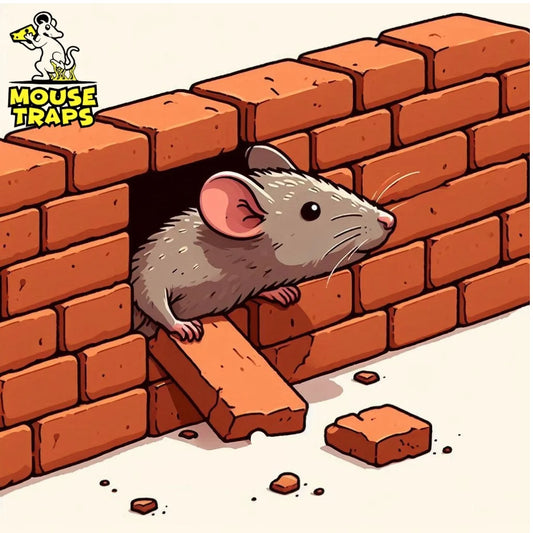Introduction:
In the eternal battle against household pests, mice stand as some of the most persistent adversaries. The latest technology offers a solution, with the introduction of electronic mouse traps. These innovative devices utilize electric shock features to swiftly get rid of rodents providing an alternative, to traditional trapping techniques.

How Do They Work?
Electronic mouse traps are designed with simplicity in mind. Typically constructed from durable plastic or metal, these traps feature a chamber with an entrance, bait station, and metal plates serving as electrodes. Powered by batteries or an electrical outlet, they lure mice inside with enticing bait, such as peanut butter or chocolate. When a mouse enters and steps onto the metal plates, it completes an electrical circuit, triggering a high-voltage shock that swiftly eliminates the rodent.
Important Factors
The effectiveness of electronic mouse traps hinges on several factors that homeowners should consider otherwise it will be useless:
- Placement: Proper placement is crucial for success. Position traps along walls, near entry points, or in areas of high mouse activity to maximize capture rates.
- Bait: Selecting the right bait is essential for attracting mice to the trap. Peanut butter and chocolate are popular choices that entice rodents effectively.
- Number of Traps: Deploying multiple traps simultaneously increases the chances of capturing mice and reducing the population more quickly.
- Maintenance: Regularly checking and resetting traps, as well as replacing batteries if necessary, ensures that the traps remain operational and effective.
Advantages Over Traditional Methods
Electronic mouse traps offer several advantages over traditional trapping methods:
- Safety: Electronic traps pose less risk to pets and children compared to snap traps or toxic substances commonly used in rodenticides.
- Efficiency: The quick dispatch of mice makes electronic traps useful in some cases for rodent control, allowing homeowners to address infestations.
Are They Effective?
To be honest there are Live Mouse Traps available, those are the best approach in comparison to others. As Electronic Traps are expensive and requires regular power supply to operate and their coverage is also small. So, Live Humane Traps work with a mechanical method with out any power supply and are less expensive than electronic traps and also they do not harm mouse in it.
Live Mouse Traps:
Live traps are designed to capture mice alive without harming them. These traps are usually made of plastic and have a door that closes once the mouse enters. Live traps are baited with food, and once a mouse triggers the door to close, it is safely captured inside.

Benefits of Live Mouse Traps:

- Humane Treatment: Live traps provide a humane way to deal with unwanted animals by allowing them to be captured without causing harm. This is especially important for people who are concerned about the welfare of animals.
- Target Specificity: Live traps can be designed to target specific species, which helps in controlling populations of pests without affecting other wildlife.
- Safe for Non-Target Animals: Unlike poisons or lethal traps, live traps pose minimal risk to non-target animals, such as pets or beneficial wildlife.
- Reusable: Many live traps are reusable, making them a cost-effective and environmentally friendly option for long-term pest control.
- Ease of Use: Live traps are generally easy to set up and use. They often involve baiting the trap with food that attracts the target animal, and once the animal enters the trap, a mechanism triggers to close the door, securely containing the animal until it can be released.
Method of using live humane traps:
- Choose the Right Trap: Select a live trap appropriate for the size and species of the target animal. Make sure the trap is in good working condition.
- Select Bait: Choose a bait that is attractive to the rats. This could be food that the animal typically eats.
- Set the Trap: Place the bait inside the trap, following the manufacturer's instructions. Ensure that the trap is properly set and the door mechanism is engaged.
- Strategic Placement: Position the trap in an area where the mouse are likely to frequent. This could be near its burrow, along its regular path, or close to areas where it has been causing damage.
- Monitor the Trap: Regularly check the trap to see if it has captured the any rat. Check local regulations regarding the frequency of trap checks, as leaving animals trapped for extended periods can be harmful.
- Release the Rat: Once the mouse is captured, handle the trap carefully to avoid stressing or injuring the animal. Transport it to a suitable release location, preferably far away from human habitation, and open the trap door to allow the animal to exit safely.
- Clean and Store the Trap: After use, clean the trap thoroughly to remove any scent traces that might deter animals. Store it in a safe place until needed again.
Conclusion
In the fight, against mouse invasions electronic mouse traps help house owners to fight with them. With a grasp of the functionality of these traps and following recommended practices for their application homeowners can successfully handle issues. Uphold a space free, from pests. with the help of traps and it's always depended upon you to choose trap that fulfill your requirements and suits the situation well.




